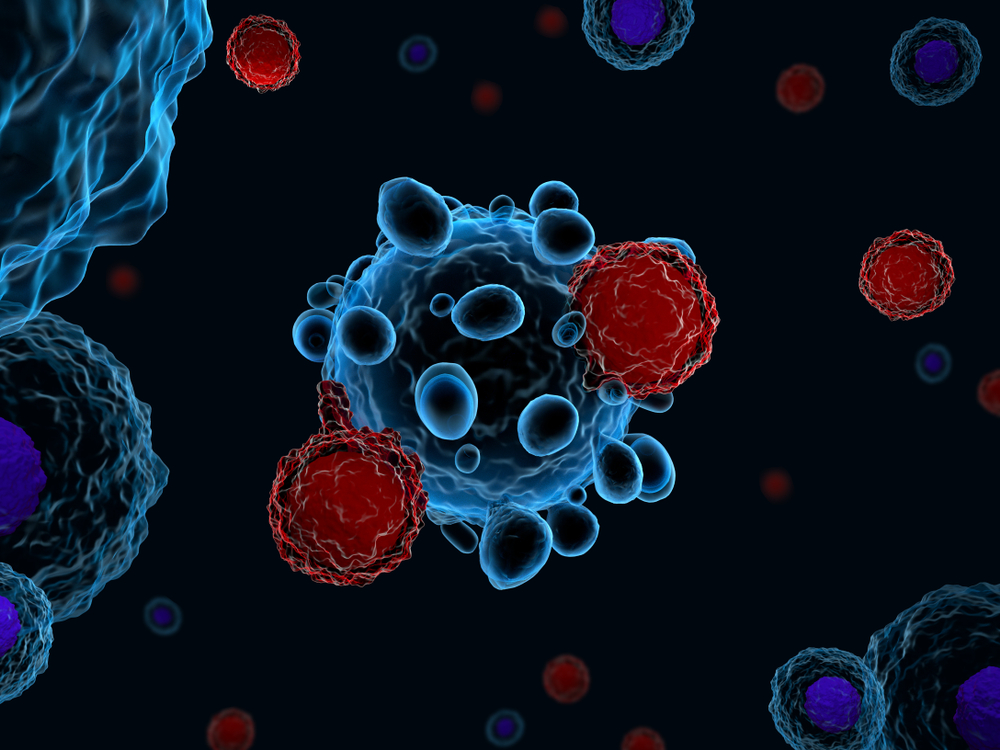Immune Cell Profile Classification Useful for Prognosis, Treatment of AAV, Study Finds

Dividing people with active ANCA-associated vasculitis (AAV) into different subgroups may be useful for determining prognosis and selecting each person’s best course of treatment, researchers say. The classification method would be based on the levels of specific types of immune cells found in the patients’ blood.
Results from the study, “Significant association between clinical characteristics and immuno-phenotypes in patients with ANCA-associated vasculitis,” were published in Rheumatology.
Anti-neutrophil cytoplasmic autoantibody (ANCA) vasculitis, or AAV, is an autoimmune disease caused by the production of autoantibodies — antibodies that wrongly target and attack healthy cells. This leads to blood vessel inflammation, and swelling in affected tissues and organs.
Clinical trials recently have shown that targeted therapies — specifically the anti-CD20 monoclonal antibody rituximab (sold as Rituxan, among others), or the inhibitor of the complement C5a receptor avacopan — are effective in the treatment of AAV.
“While targeted therapies have been successful, we do not currently have a complete picture of how immune cell profiles reflect the pathophysiology [development] of AAV. In particular, the association between immunological features and organ involvement or therapeutic prognosis is not well described,” the investigators said.
To learn more, researchers from the Keio University School of Medicine in Japan and their collaborators explored the possible relationship between patients’ immune cell profiles and clinical characteristics of AAV.
The investigators collected blood samples from 36 people with active AAV, including 14 with microscopic polyangiitis (MPA), 16 with granulomatosis with polyangiitis (GPA) and six with eosinophilic granulomatosis with polyangiitis (EGPA), and 18 healthy individuals (controls).
They then used these blood samples to assess the levels of different types of immune cells — including T-cells, B-cells, natural killer (NK) cells, and dendritic cells — using a technique called flow cytometry. Based on the proportion of immune cells found in the blood, the patients were then divided into different subgroups. The participants’ prognosis and degree of organ involvement were then assessed separately for each subgroup.
Researchers note that T-cells and NK cells are immune cells that recognize and destroy other cells or microbes seen as threat by the immune system. B-cells, meanwhile, are immune cells that produce antibodies against specific substances seen as threats. Dendritic cells are cells that tell the T-cells what their targets are.
Blood sample analyses revealed that people with AAV had higher levels of different types of white blood cells (monocytes, eosinophils, and neutrophils), activated T-cells, and antibody-producing cells (plasma cells and plasmablasts), compared with healthy individuals.
Based on the proportions of each particular type of immune cell, the AAV patients were divided into three different subgroups:
- The antibody production-related group (9 people), which included those with the highest proportion of antibody-producing cells like plasma cells and dendritic cells
- The cytotoxic activity-related group (4 patients), which included individuals with the highest proportion of killer cells, such as activated T-cells and NK cells
- The neutrocytosis/lymphocytopenia-related group (23 individuals), which included those with abnormally high levels of neutrophils in the blood (neutrocytosis), and those who had abnormally low levels of lymphocytes in the blood (lymphocytopenia).
The individuals in the antibody production and cytotoxic activity-related groups had involvement of the central nervous system (CNS) which is composed of the brain, brainstem and cerebellum. Meanwhile, those from the neutrocytosis/lymphocytopenia-related group tended to have high kidney involvement.
Severe infections were more frequent among patients in the neutrocytosis/lymphocytopenia-related group compared with the other two groups.
The frequency of AAV relapses was similar in people from all groups.
“Our comprehensive … analysis revealed the characteristics of immune cell profiles in AAV, characteristic differences between patients with lesions in the CNS and kidneys, and the association between therapeutic prognosis and clustered subgroups. Accumulation of further evidence on the cells responsible in each group will help to select more appropriate treatment and develop new therapeutic methods,” the researchers said.






